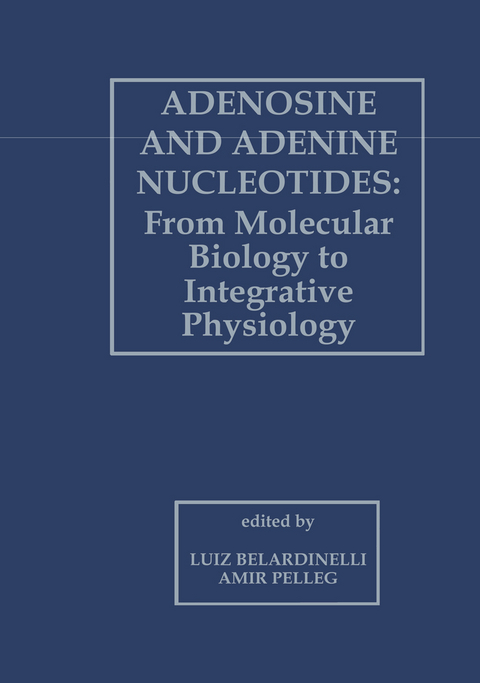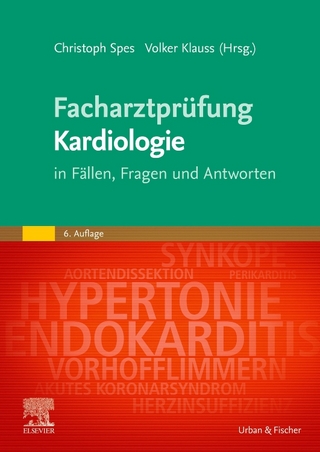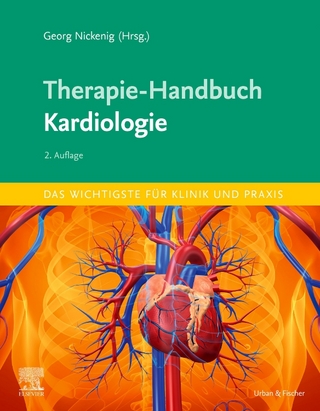
Adenosine and Adenine Nucleotides: From Molecular Biology to Integrative Physiology
Springer (Verlag)
978-0-7923-3190-2 (ISBN)
This book contains 55 chapters that summarize referred to the special issue of Drug Development lectures given during the Fifth International Research (Volume 31, Number 4, April 1994). Symposium on Adenosine and Adenine Measured by the number and quality of presenta- Nucleotides held in Philadelphia, Pennsylvania, tions, and by the record number of participants, U. S. A. , May 9-13, 1994. The symposium and the Fifth International Symposium on Adenosine its proceedings follow four previous symposia and Adenine Nucleotides was clearly an intel- and their published proceedings. Previous sym- lectually stimulating meeting. It is safe to posia were held in Banfff, Canada (1978), conclude that the purine research field is vibrant Charlottesville, Virginia (1982), Munich, and still growing. Adenosine has rapidly become Germany (1986), and Lake Yamanaka, Japan the drug of choice for the acute management (1990). of supraventricular tachyarrhythmias and was The program included a wide range of sub- recently approved for use in combination with jects from molecular and cellular biology to cardiac imaging for detection of ischemic heart clinical applications.
Great emphasis was placed disease. Additional clinical applications of on cutting edge information derived from studies adenosine and adenosine-related drugs and ATP using molecular and cellular biology techniques seem closer than ever before. The editors would like to express their grati- applied to the field of adenosine and adenine nucleotide research. Likewise, the program tude to the distinguished contributors for their included a number of presentations on poten- excellent chapters and to all participants.
I. Molecular and Cellular Biology of Adenosine and ATP.- A. Molecular Biology.- 1. Molecular Biology of Adenosine Receptors.- 2. Recombinant Techniques as Applied to the Study of A1Adenosine Receptors.- 3. In Situ Hybridization of Adenosine Receptors in Brain.- 4. Molecular Modeling of Adenosine A1and A2aReceptors.- 5. Purinoceptor Nomenclature: Challenges for the Future.- 6. Molecular Cloning and Expression of SNST1, a Renal Sodium/Nucleoside Cotransporter.- 7. Antibodies as Probes of Nitrobenzylthioinosine-Sensitive Nucleoside Transporters.- B. Cellular Biology.- 8. Regulation of the Human A1Adenosine Receptor Gene.- 9. Adenosine A2Receptor Regulation of Striatal Gene Expression.- 10. Neuronal ATP Receptors.- 11. Possible Role of Glia in the Induction of CNS-like Properties in Aortic Endothelial Cells: ATP-Activated Channels.- 12. Modulation of Cardiomyocyte Membrane Currents by A1Adenosine Receptors.- 13. Regulation of Phospholipases C and D, Calcium, and Protein Kinase C by Adenosine A1Receptors.- 14. Adenosine Derived from Neurally Released ATP Is the Physiologic Cause of Skeletal Neuromuscular Depression.- 15. Adenosine 5’-Triphosphate Receptor—Mediated Currents in Rat Intracardiac Neurons.- 16. Desensitization of A1Adenosine Receptors.- II. Medicinal Chemistry.- 17. Selective A2Adenosine Receptor Agonists with Potent Inhibitory Activity on Platelet Aggregation.- 18. Novel ATP Agonists Reveal Receptor Heterogeneity within P2xand P2ySubtypes.- 19. Adenosine Receptors: Selective Agonists and Antagonists.- III. Purine Release and Metabolism.- 20. Cardiac Energetics and Adenosine Formation.- 21. Extracellular Hydrolysis of ATP and Formation of Adenosine in the Nervous System.- 22. P-Glycoprotein Serves as a Transporter of Cellular ATP.- 23. On the Origin ofExtracellular ATP in Cardiac Blood Vessels: A Dual Role for Endothelium.- 24. Aliosteric Modulation of Nucleoside Transport by Adenosine and ATP.- IV. Physiology and Pharmacology of Adenosine and ATP: Effects on Tissue and Organs.- A. Renal System.- 25. Chloride Secretion in the Shark Rectal Gland: A Model for Epithelial Adenosine Receptors.- B. Cardiovascular System.- 26. Myocardial Adenosine Receptors.- 27. Coronary Adenosine Receptors: Subtypes, Localization, and Function.- 28. Biologic Activity of Adenosine A2aReceptor Antagonists.- C. Nervous System (Central and Peripheral).- 29. Role of A2aReceptors in the Hippocampus and Motor Nerve Endings.- 30. Augmentation of Extracellular Adenosine Formation as a Potential Therapeutic Strategy for Preventing Excessive Excitatory Amino Acid Transmission in the Central Nervous System.- 31. Purinoceptors on Glial Cells of the Central Nervous System: Functional and Pathologic Implications.- 32. Inhibitory Action of Adenosine and Adenine Dinucleotides on Synaptic Transmission in the Central Nervous System.- 33. Receptors for ATP at Peripheral Neuroeffector Junctions.- 34. Anatomic-Functional Correlates of Adenosine-5’-Triphosphate Triggered Vagal Depressor Reflex.- 35. Excitatory Effect of Adenosine on Cardiac Sympathetic Afferent Fibers.- 36. Mechanism of Anginal Pain: The Key Role of Adenosine.- D. Other Systems.- 37. The P2ZReceptor and its Regulation of Macrophage Function.- 38. Effects of Purinoceptor Agonists on Insulin Secretion.- V. Cytoprotective Actions of Adenosine.- A. Cardioprotection.- 39. Receptor-Mediated and Metabolic Effects of Adenosine in Ischemic and Postischemic Myocardium.- 40. Role of Activation of Ecto-5’- Nucleotidase for Cardioprotection in Ischemic Preconditioning.- 41. Adenosine Uptake Blockersfor Cardioprotection.- 42. Endothelial Adenosine Receptors Modulate Leukocyte Adhesion: Relevance for Myocardial Reperfusion Damage.- B. Neuroprotection.- 43. Adenosine and Brain Ischemia.- 44. Adenosine Metabolites Are a Source of Oxygen Free Radicals in the Ischemic/Reperfused Rat Brain.- 45. Hyperglycemic Ischemia and Reperfusion: Effects on Adenosine and Adenine Nucleotides.- C. Renal Protection.- 46. Studies on the Mechanism by Which Adenosine Receptor Antagonists Attenuate Acute Renal Failure.- VI. Therapeutic Applications.- A. Cardiovascular.- 47. Clinical Electrophysiology of Adenosine.- 48. Myocardial Imaging during Adenosine Infusion.- 49. Intravenous Adenosine and Lidocaine in the Limitation of Infarct Size: Preliminary Safety Data.- 50. Role of Adenosine in the Phenomenon of Ischemic Preconditioning.- B. Nervous System.- 51. Anticonvulsant Actions of Novel and Reference Adenosine Agonists.- 52. Behavioral Effects of Adenosine Receptor Stimulation.- 53. Evidence for the Existence of Antagonistic Intramembrane Adenosine A2a/Dopamine D2Receptor Interactions in the Basal Ganglia: Analysis from the Network to the Molecular Level.- C. Other Applications.- 54. Role of Adenosine and Adenosine Triphosphate as Anesthetic Adjuvants.- 55. Mechanisms and Therapeutic Actions of Uridine Triphosphate in the Lung.
| Zusatzinfo | XIX, 543 p. |
|---|---|
| Verlagsort | Dordrecht |
| Sprache | englisch |
| Maße | 178 x 254 mm |
| Themenwelt | Medizin / Pharmazie ► Allgemeines / Lexika |
| Medizinische Fachgebiete ► Innere Medizin ► Kardiologie / Angiologie | |
| Medizinische Fachgebiete ► Innere Medizin ► Nephrologie | |
| Medizin / Pharmazie ► Medizinische Fachgebiete ► Pharmakologie / Pharmakotherapie | |
| Naturwissenschaften ► Biologie ► Biochemie | |
| ISBN-10 | 0-7923-3190-7 / 0792331907 |
| ISBN-13 | 978-0-7923-3190-2 / 9780792331902 |
| Zustand | Neuware |
| Informationen gemäß Produktsicherheitsverordnung (GPSR) | |
| Haben Sie eine Frage zum Produkt? |
aus dem Bereich


